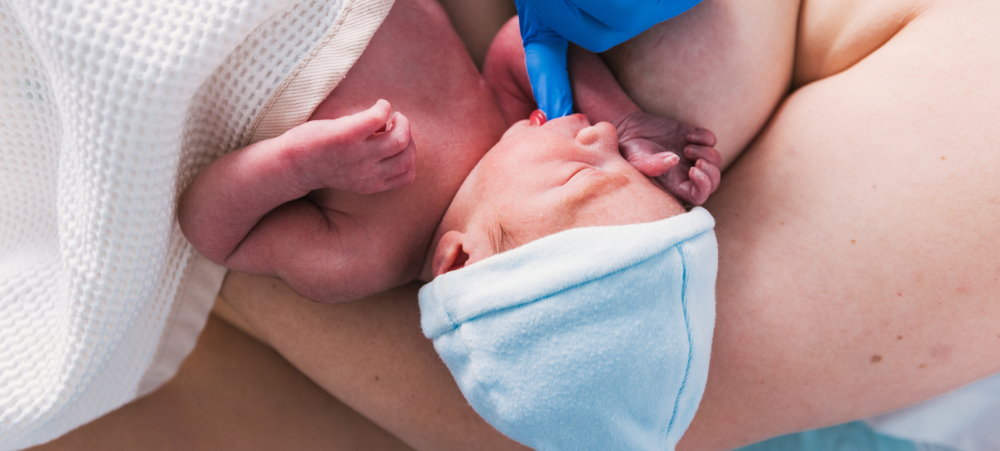Affinity Health, a leading provider of high-quality health coverage, explores different birth defects, their causes, symptoms, and available treatments.
“Having a baby is a momentous occasion filled with hope and joy. However, for some families, this journey may come with unexpected challenges in the form of birth defects,” says Murray Hewlett, CEO of Affinity Health.
“Birth defects affect about 3-6% of newborns globally. This translates to millions of babies born each year with congenital anomalies. As we observe World Birth Defects Day on 3 March, raising awareness about birth defects is important. It’s important to remember that every baby is unique, and even if a birth defect is present, with proper care and support, many children can lead happy and fulfilling lives.”
What Are Birth Defects?
Birth defects are structural or functional abnormalities present at birth that can affect a baby’s overall health, development, or physical appearance.
These conditions may range from mild to severe and involve various body parts, including the heart, brain, spine, limbs, or internal organs.
While some birth defects may be detected during pregnancy through prenatal screening tests, others may only become apparent after birth.
Understanding the Causes
While the exact cause of many birth defects remains unknown, some common factors may increase the risk:
Genetic Factors: Certain genetic mutations or hereditary disorders passed down from parents may raise the risk of birth abnormalities. These may include chromosomal anomalies like Down syndrome or single-gene illnesses like cystic fibrosis.
Environmental Exposures: Exposure to harmful substances during pregnancy, such as drugs, alcohol, tobacco smoke, pesticides, or certain medications, can increase the risk of birth defects. Expectant mothers should avoid these substances and maintain a healthy lifestyle during pregnancy.
Maternal Health Conditions: Maternal health conditions like diabetes, obesity, or infections during pregnancy can also contribute to the development of birth defects. Proper management of these conditions and prenatal care can help reduce the risk.
Nutritional Factors: Inadequate intake of essential nutrients like folic acid during pregnancy has been linked to an increased risk of neural tube defects, such as spina bifida. Taking prenatal vitamins and following a balanced diet can help prevent deficiencies.
Advanced Maternal Age: Women who conceive at an older age may have a higher risk of having a baby with certain birth defects, such as Down syndrome. Prenatal screening tests can help assess the risk and provide information for informed decision-making.
5 Types of Birth Defects
#1 Heart Defects
Some babies are born with congenital heart defects that affect the structure of the heart and its ability to pump blood effectively. Symptoms can range from moderate to life-threatening. Medication, surgery, and other procedures to enhance heart function are all possible treatment options.
#2 Neural Tube Defects
Sometimes, when a baby’s brain and spinal cord are forming in the early days of pregnancy, they don’t close up like they should. This can cause conditions like spina bifida or anencephaly. Babies with these problems might have trouble moving, learning, or growing like other children. Finding these issues earlier is essential so doctors can help manage them.
#3 Cleft Lip and Palate
Cleft lip and palate are common birth defects when a baby’s lip or the roof of their mouth doesn’t close up. This can leave a space called a cleft, which might make it hard for the baby to eat or talk. Doctors can rectify the lip and palate with surgery. Sometimes, children might need extra help with speech therapy or dental care.
#4 Down Syndrome
Down syndrome is a condition that some babies are born with because they have an extra chromosome. This can cause them to look a bit different and learn things a little differently. Children with Down syndrome might need extra support with things like school and healthcare, but with early help, they can do lots of amazing things and reach their full potential.
#5 Clubfoot
Clubfoot is a congenital condition in which one or both feet are twisted out of shape or position. It can affect mobility and may require treatment with braces, casting, or surgery to correct the alignment of the foot. With early intervention, most children with clubfoot can achieve normal function and mobility.
Seeking Support and Treatment
If you suspect that your baby may have a birth defect, it’s crucial to seek medical evaluation and support as soon as possible. Your healthcare provider can conduct diagnostic tests, such as ultrasounds, genetic screenings, or imaging studies, to assess the nature and severity of the defect.
Early intervention services, including medical treatments, therapies, and support programmes, can help manage symptoms and improve outcomes.
We understand that there are many aspects that encompass a Mother, Father or Child and strive toward providing resources and services that accommodates this.
Our content is aimed to inform and educate families on issues starting from pregnancy through to the challenges of the teen-age years.
- Say Hello to the Ultimate Holiday Brunch Bite - December 17, 2025
- Tiny Toons Looniversity Returns: Meet the Voice Behind Plucky and Hamton! - December 12, 2025
- From Pain to Possibility: Panado®’s New Marketing Campaign, Highlights The Joy Of Pain Relief - December 10, 2025





